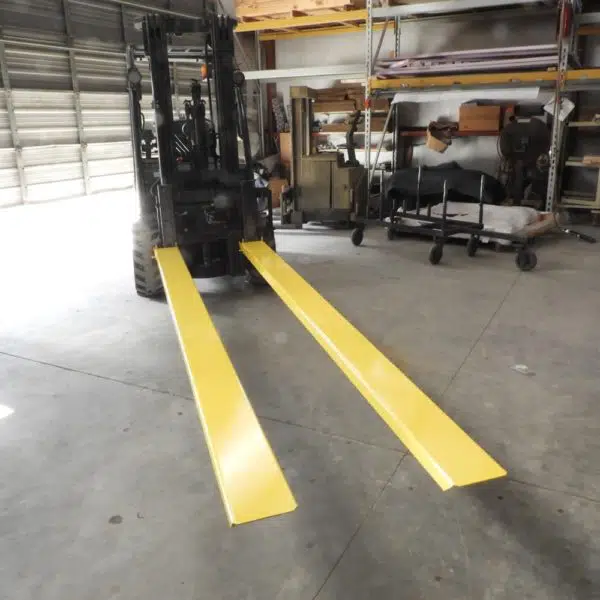Tractor ROPS and Canopies:
Everything you need to know
Did you know farming is one of the most dangerous occupations in the United States?
According to the National Institute for Occupational Safety and Health (NIOSH), farmers had an accidental death rate of 21.4 per 100,000 workers in 2016. In comparison, the manufacturing industry had only 6 deaths per 100,000 workers.
So what is the leading cause of death in the farming industry?
Transportation accidents, with tractor rollover accidents being the most common.
When many people think of the word “tractor,” they probably visualize one of the large field tractors with a fully enclosed cab. However, they forget many tractors on small farms, ranches, or hobby farms are much smaller.
And what do these small tractors often have in common?
They do not have an enclosed cab! Also, many older models do not have any rollover bars or canopy protection either.
So, if your tractor does not have an enclosed cab, what can you do to make sure you have rollover and canopy protection?
At Iron Bull Manufacturing, we offer a variety of certified aftermarket Tractor ROPS as well as Universal Shade Canopies to help keep you safer without hurting your tractor's look, style, or brand!
In this article, we are going to answer this question and more.
Let’s get started!
1. Terms to know
Before we go too far, let’s define the terms we will be using.

Enclosed cab: An enclosed cab means the tractor cab has a barrier completely surrounding the occupant of the tractor cab. This barrier typically consists of a hard surface on the top and glass on the sides--it's like the operator is sitting in a little bubble.
Enclosed cabs protect the occupant from outside elements such as rain or dust. In the case of an accident, an enclosed cab helps protect the occupant from being crushed.
Tractor canopy: A tractor canopy is a piece of fabric, plastic, metal, or other material mounted on the top of the tractor over the occupant.
Tractor canopies do not enclose the cab, so the occupant is not protected from outside elements. If there is an accident, the occupant can fall out of the cab and experience injury.
Rollover bar: Also commonly referred to as a “roll bar,” a rollover bar is a system or structure that protects the occupant from injuries during a vehicle rollover.
A tractor rollover bar is typically a metal bar mounted behind the seat of the tractor that extends over the occupant’s head. If the tractor rolls or tips over, the rollover bar prevents the occupant’s head from being crushed. This is assuming they are wearing a seat belt and are still in the seat.
Rollover accident: Rollover accidents are a type of vehicle crash where the vehicle tips onto its roof or side.
ROPS: Short for “rollover protection system,” ROPS is a protective structure that is mounted on a vehicle to protect the occupant from a rollover accident. It typically includes the use of a seat belt as well.
Several regulatory agencies, including OSHA, have ROPS requirements when employees are operating equipment with the potential to roll over. This includes heavy machinery, tractors, mowers, and other pieces of equipment and vehicles.
2. What does "Certified ROPS" Mean?
Certified ROPS, which stands for "Rollover Protection System," is a certified protective structure that is mounted on a vehicle to protect the occupant from a rollover accident. ROPS usually include the use of a seat belt, as no ROPS could completely protect you if you aren't wearing your seatbelt.
A common misconception when discussing rollover bars and ROPS is the following: "Any rollover bar designed to protect the operator is certified ROPS, right?"
Wrong!
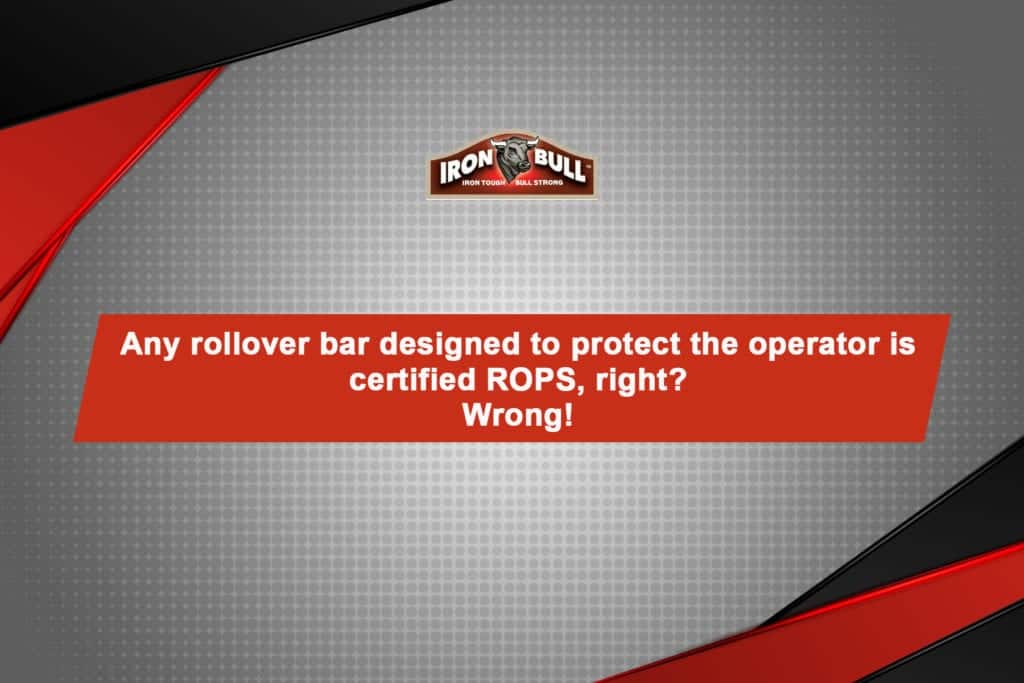
Equipment manufacturers are specific about the rollover protection they design, build, and offer for their equipment. Unauthorized modifications made to these rollover systems void the ROPS certification.
A good illustration of this is the limited warranty that comes with many tools. You buy a new tool, and the manufacturer gives specific instructions on how the tool is to be used. However, you make a few “simple tweaks” to the tool that you assume makes it more useful.
So what happens if the tool breaks down because of the tweaks you made? Will the manufacturer honor the warranty when they see your modifications?
Of course not! The tweaks you made are what caused the breakdown.
Similarly, when a tractor has a certified ROPS system, it is vital that the system is not tampered with or modified. Even small changes to the ROPS can harm the integrity of the materials, mounting, and safety if the tractor has a rollover accident.

There are companies offering aftermarket rollover systems for tractors and other equipment. However, just because these systems are designed to protect an operator during a rollover accident does not mean they can be advertised as “certified ROPS.”
So what actually makes a rollover system officially certified ROPS?
In the United States, a rollover system must meet 2 standards to be considered certified ROPS:
In Canada, they must meet the following standards:
- CSA B352.0
- CSA SA 352.1
It can quickly become confusing since some aftermarket rollover systems are advertised as “ROPS” even though they are not certified ROPS. Technically this is allowed since any rollover system can be labeled a “ROPS.”
What should you look for when buying a rollover system?
If you are buying an aftermarket rollover system, ask the company specifically if the system is certified ROPS.
If they have rollover equipment that is not certified ROPS, it doesn’t mean it won’t protect you, but it does mean you should take some extra precautions in understanding how it works, how it is designed, and how it is manufactured.
You should purchase a fully certified ROPS system if possible. Depending on where you live, there are rebates and other resources to help with the purchase cost.
BONUS TIP: ROPS and tractor canopies aren't just for tractors on farms. Something as small as a lawn mower can still do a lot of damage to you or your family if it rolls over you, so ROPS's are essential on smaller equipment too. To learn more about this check out our blog: 5 Components of a Quality Tractor Canopy (and 4 reasons it matters).
3. Why is it important to have a tractor canopy and certified ROPS combo?
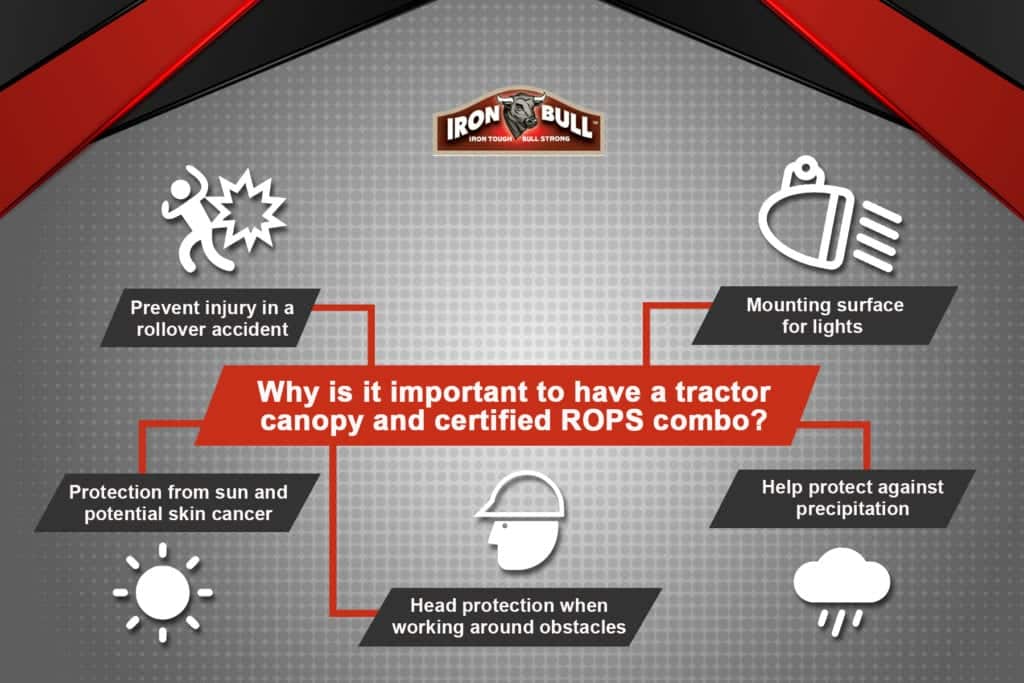
As we mentioned before, the majority of tractors running today are not the massive earth-movers we see in fields. Many of these large tractors have enclosed cabs and seatbelts, and therefore they are automatically certified ROPS when used correctly.
But what about the small tractors that don’t have enclosed cabs?
In 2014, it was estimated only 62% of tractors used on farms had a ROPS with a seatbelt.
How do the remaining 38% of the tractors benefit by combining a tractor canopy with a certified ROPS rollover bar and seatbelt?
Let’s take a look.
Prevent injury in a rollover accident
Preventing injury is the most important reason to have a tractor canopy with a certified ROPS rollover bar. No value can be placed on protecting and saving a human life.
Like any accident, no farmer or operator wants or expects their tractor to roll over when it occurs. After all, that is why they are called “accidents.”
However, we are not entirely helpless. We can do our best to prepare for accidents, and you should never wait to take action until after the accident occurs!
Anyone operating a tractor without an enclosed cab is better prepared and protected for a rollover accident if they have a certified ROPS with a seatbelt. Having a rollover bar does not mean we expect an accident to happen; it simply means we are prepared and value the safety of the operator.
So are seat belts still necessary?
Absolutely!
It is critical to know that a rollover bar loses most of its value if the operator is not wearing a seat belt on their tractor.
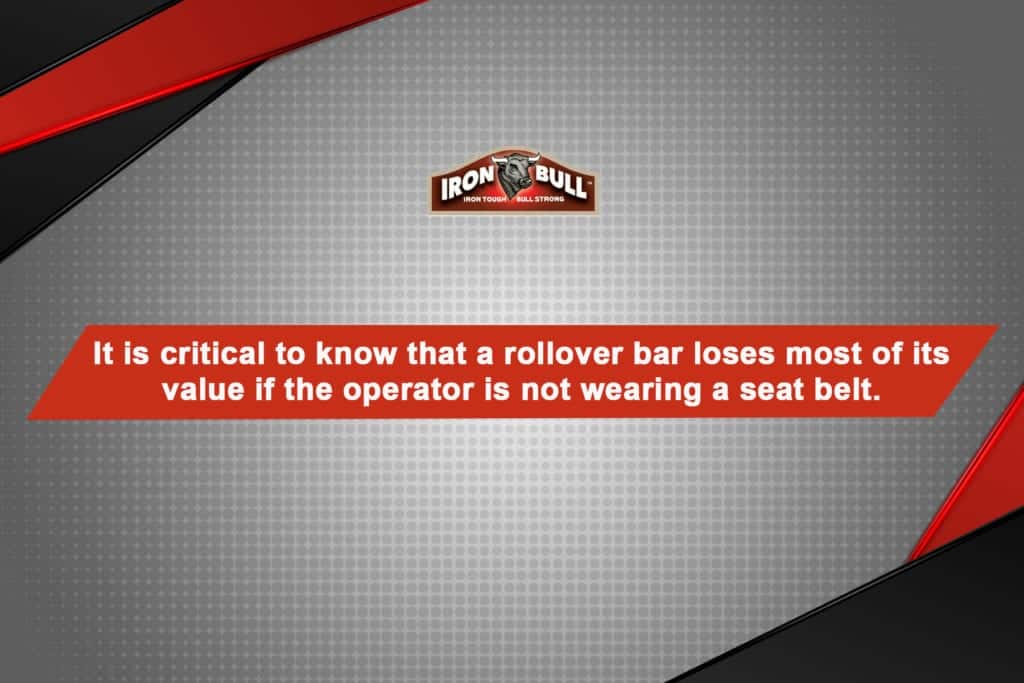
If a tractor has a rollover accident, the ROPS is designed to keep the operator from being crushed. However, if the operator is not wearing a seatbelt, he will be thrown from the tractor seat and be crushed or injured since the rollover bar no longer provides protection.
Protection from sun and potential skin cancer
The warmth of the sun on a summer day can be delightful - and the truth is that without the sun, we'd be in big trouble. However, too much direct sunlight over long periods of time can be very harmful.
First of all, too much sun can give you painful sunburn that damages the appearance of your skin.
But did you know too much direct sunshine has more dangers than merely getting a burn?
Most skin cancer is caused by too much exposure to ultraviolet light. This light occurs in tanning beds, some types of radiation, and direct sunlight.
Thankfully a tractor canopy protects you from the harsh afternoon sunshine.
If your skin and hair are lighter, then getting skin cancer through direct sunlight is more of a threat.
So how does a tractor canopy help protect from possible skin cancer?
Most tractor canopies are designed and positioned to cover most of the cab area, and they are centered over the area where the operator sits.
When the sun is lower and on the horizon, such as morning or evening, sun rays reach the operator. However, during the day when the sun is the hottest and most dangerous, the operator is protected by the overhead canopy.
Head protection when working around obstacles
We’ve all experienced it, whether we are riding a mower, tractor, or simply walking:
An insulting and unpleasant smack in the face from a tree branch or other overhead obstacle.
Having a tractor canopy and rollover bar combination helps protect against this. Many people think about rollover danger, but they don’t typically think about overhead obstacles.
This is most commonly experienced when using a small tractor around trees, bushes, or other areas with overhanging limbs and brush.
So next time you are mowing or trimming along a tree line, you don’t need to worry about getting a surprise bump from an overhanging limb!
Help protect against precipitation
While this is not a direct safety concern, we know how unpleasant it is while working outside in precipitation.
Whether it is rain, snow, or sleet, no one likes getting wet when they are bringing in the last load of hay, finishing the mowing, or wrapping up some other task before they head inside.
Because it is not an enclosed cab, the operator will probably still feel some precipitation, especially if it is windy. However, he does have some protection from the overhead tractor canopy, especially if the precipitation is coming straight down.
Mounting surface for lights
If you do much driving on the road with your tractor, or if you find yourself working close to the road, then road safety is a big concern because of slow tractor speed.
While tractors come standard with lights and hazard signals, these are sometimes inadequate. Small tractors with low-mounted lights can feel especially exposed. Having an overhead bar allows you to mount additional lights, antenna, or other safety equipment to the bar.
One of the most common safety features mounted on a tractor rollover bar is an LED beacon or strobe light.
When mounted above the operator, these caution lights are easily spotted by approaching vehicles, and they do not shine or flash in the operator’s eyes.
4. Different kinds of tractor canopy materials
There are different methods, styles, and materials used in making tractor canopies, with each material having pros and cons.
Here are the most common materials used to make tractor canopies. Each one can typically be painted in different colors to match your tractor so it all looks seamless.
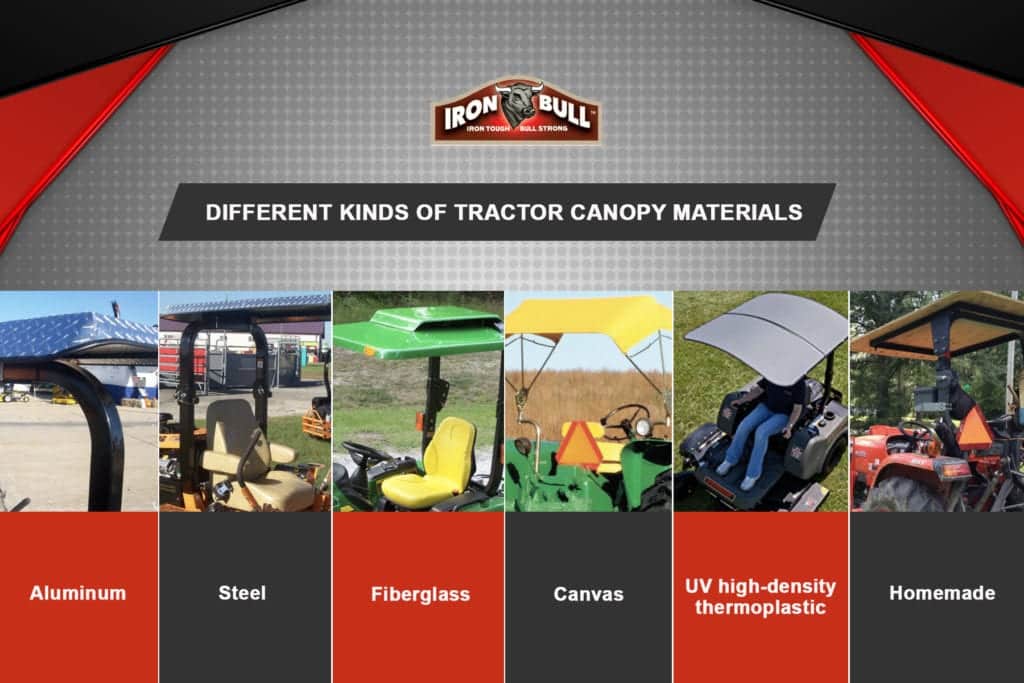
- Aluminum: Aluminum is lightweight, making the canopy system easy to lift and install. A potential issue with aluminum is it can dent and scratch easily.
- Steel: Steel tractor canopies are usually powder coated to avoid rusting. They are sturdier than aluminum but also heavier. If the powder coat is scratched or cut, it begins to rust.
- Fiberglass: Fiberglass is lightweight like aluminum, and tends to be cheaper as well. However, fiberglass cracks easier than aluminum or steel. It also fades and loses its color faster.
- Canvas: Canvas canopies are not standard when safety is a concern because they tear and rip easily. Also referred to as “buggy tops,” they are typically seen on older or vintage tractors.
- UV high-density thermoplastic: Thermoplastic canopies are designed with direct sunlight in mind. Their material and design allow the canopy to maintain shape and color in direct sunlight better than most materials.
- Homemade: Occasionally, you see a homemade tractor canopy made from plastic or other cheaper substance. Sometimes it is as simple as having an umbrella. While these options are cheap and might work short-term, they do not provide the maximum protection that well-designed tractor canopies provide.
When you buy a tractor canopy, it is always good to ask the manufacturer what material the canopy is made from, and also how it is designed. If you are concerned about wearing or fading, ask them what their warranty and replacement options are.
Not sure which tractor canopy you need, or overwhelmed about choosing the right size? Make sure to check out our blog: 3 Steps To Properly Size Your Tractor Canopy
5. Do certified ROPS really keep us safe?
Now that we have discussed the benefits of having a rollover tractor canopy, particularly one with ROPS certification, we need to ask the question:
Does having a certified ROPS system with a tractor canopy keep operators safe?
Yes!
Of course, it does not guarantee 100% safety in an accident, (accidents still happen even with prevention measures) but it sure ups your chances! Let’s take a look at some rollover accident data, and then a few stories of ROPS accidents.
Rollover Accident Data
ROPS products began to be considered and tested in the 1930s and 1940s, but rollover accidents had been a known safety issue since tractors were first used in the early 1900s. Allis-Chalmers was one of the first companies to manufacture ROPS, and more patents followed in the 1950s and 1960s.
Sweden was one of the first countries to require ROPS, and the country required all tractors have ROPS in 1959. Some of the first studies on ROPS safety also came from Sweden.
A later study showed there were 40 known tractor rollover accidents between 1959 and 1966 in Sweden. However, due to ROPS requirements, there was only 1 death in these accidents.
How did the 1 death occur?
The operator tried to jump free during the accident and was crushed to death. If he had remained in his ROPS cab with his seatbelt fastened, he probably would have lived.
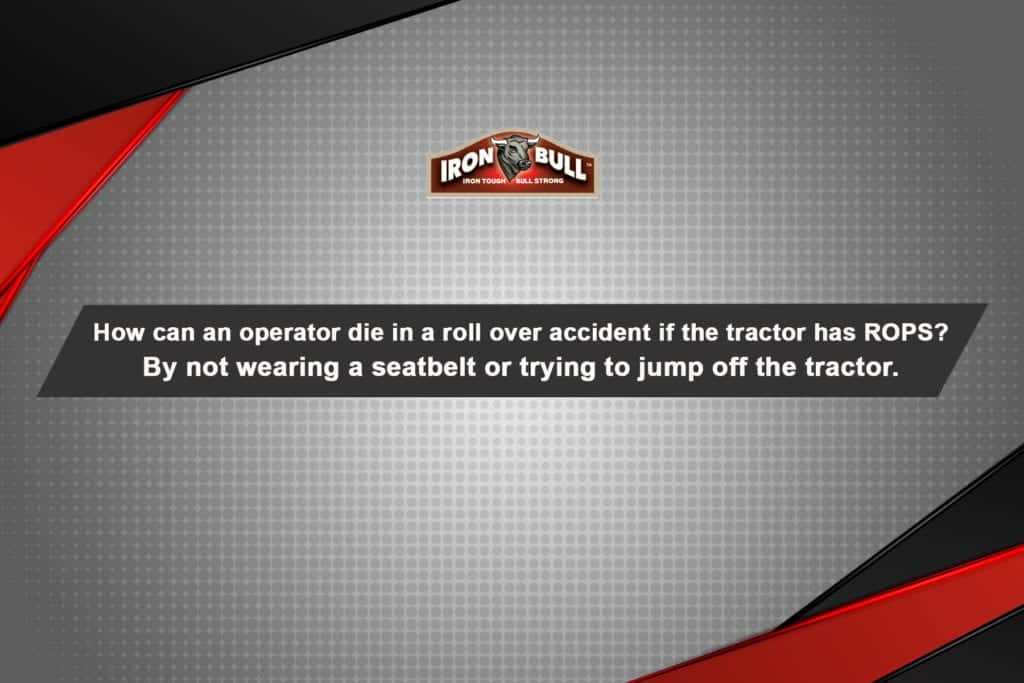
After ROPS became standard in the United States, a study was done on 100 tractor rollover accidents in the state of Nebraska occurring between 1966 and 1969.
Out of the 100 accidents, the only fatalities reported were from tractors not having ROPS. No deaths were reported in rollover accidents with tractors equipped with ROPS.
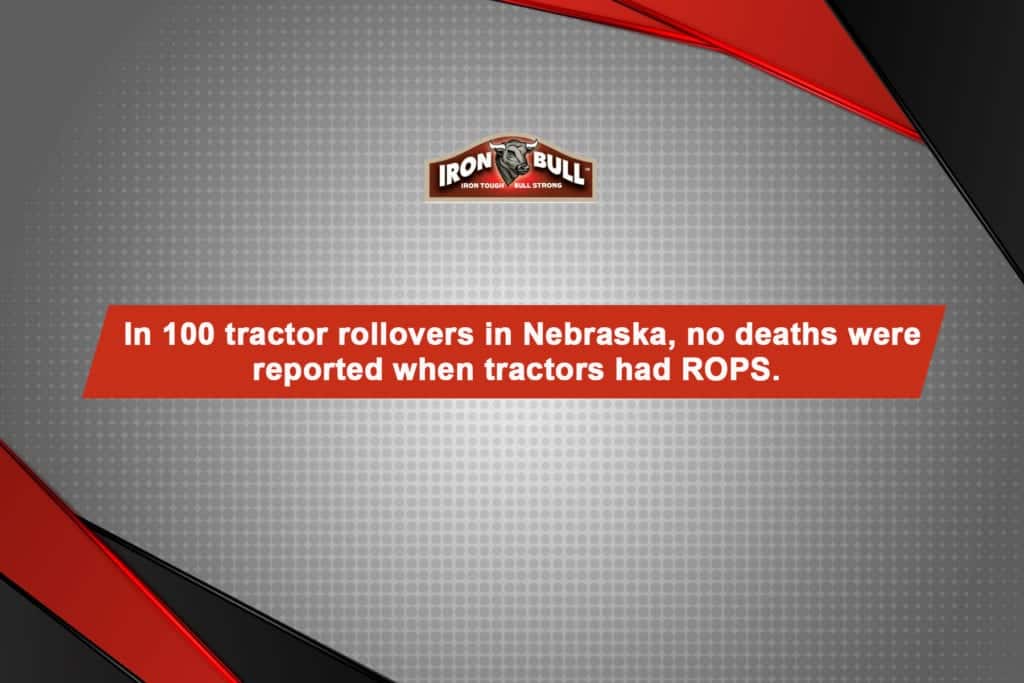
According to the National Ag Safety Database, in Kentucky, from 1994 to 1999, 108 farmers were killed either from being crushed under tractors that rolled over, or from being thrown from moving tractors.
While investigating these cases, it was determined that 98% of these deaths could have been avoided if the operators would have had a ROPS cab and been wearing their seatbelts!
Stories Involving ROPS
Sadly, there are many stories of tractor rollover accidents in which the operator died.
Many of these stories have a common theme: The operator frequently ran tractors and was experienced. However, something unexpected caused the tractor to roll over, crushing the operator.
This happened to Matthew Oyloe on Nov. 6, 1999.
While hauling a load of manure to a field, the tires of his tractor slipped into the ditch beside the road, and his tractor rolled over. Unfortunately, Matthew was pinned underneath and killed.
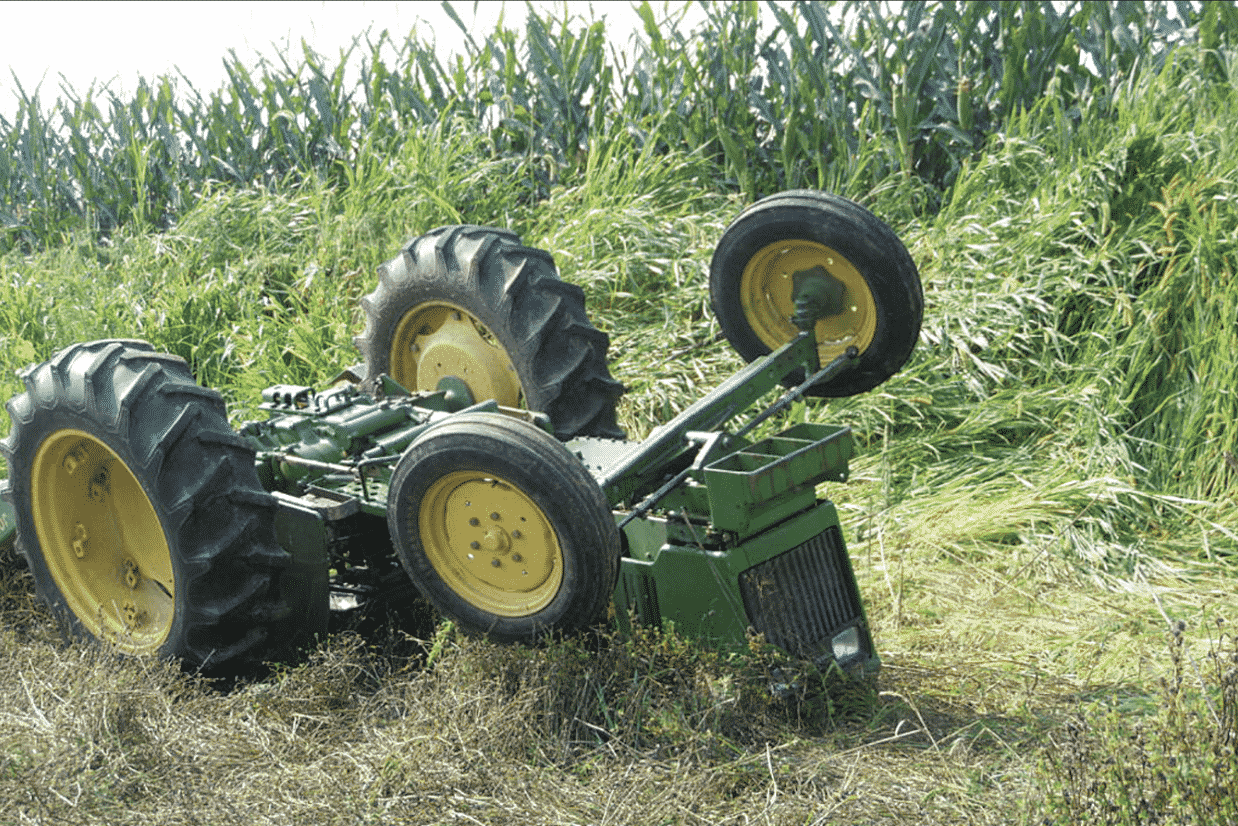
There were no skid marks or apparent reason why the tractor slid into the ditch, and Matthew was used to running the 756 International. It was his favorite tractor, and he had taken hundreds of loads of manure out to the fields. It was a common, everyday situation.
What was the 756 International missing?
Because it was an older tractor, it did not have a ROPS system or seat belt. When it rolled over, Matthew had no chance of remaining in the seat and was crushed by the weight of the tractor.
Several states, along with various farm bureaus, have developed programs helping farmers pay for certified ROPS equipment on older tractors.
Illinois is one of these states. Its large farming community uses a wide variety of tractors, but many of the smaller tractors without ROPS are involved in the state’s drainage ditch system.
Due to the terrain of much of the state, many fields have drainage ditches running parallel to the roads. These ditches are narrow and sloped, and mowing and maintaining them have become one of the largest tractor rollover culprits in the state.
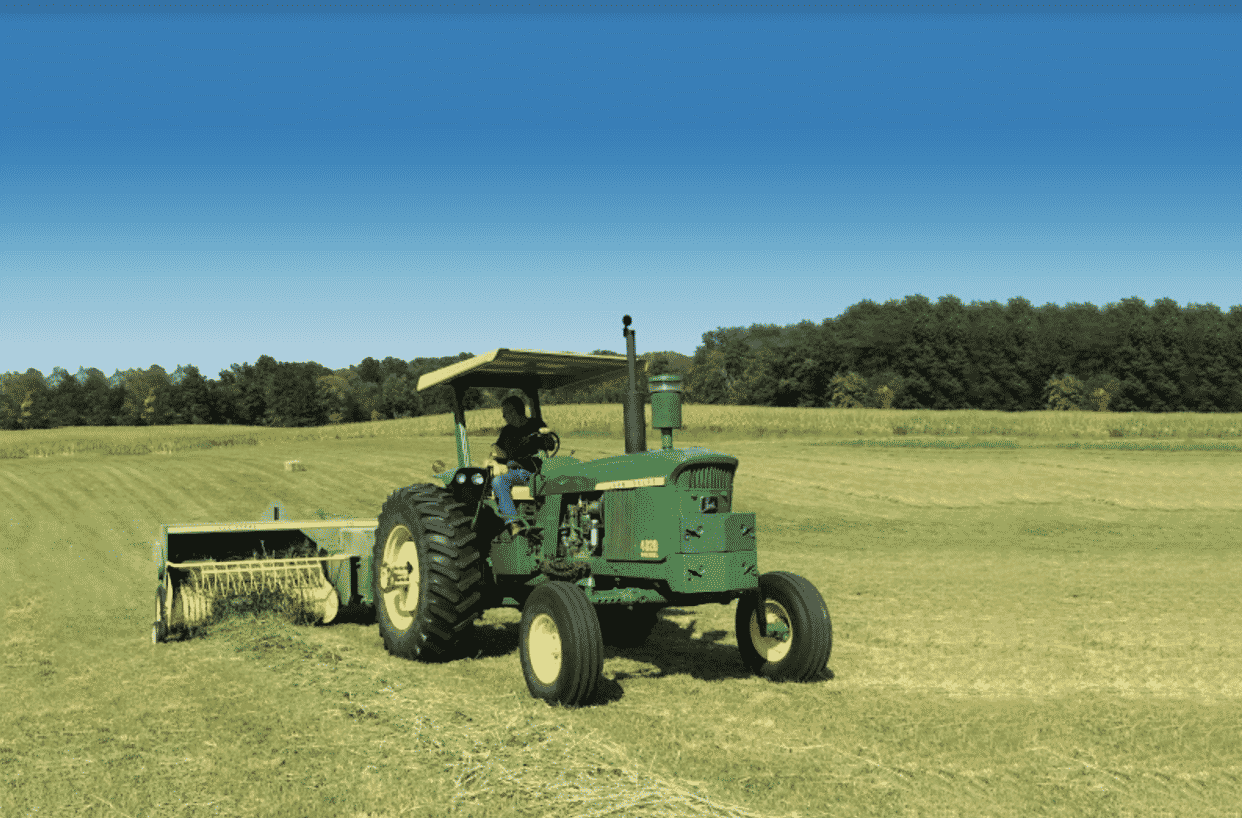
In recent years, organizations have worked to help farmers purchase certified ROPS equipment for their smaller tractors. University of Illinois Extension safety specialist Bob Aherin explains the ROPS equipment is highly effective at keeping tractors from rolling a full 180 degrees if they roll in a ditch or other terrain.
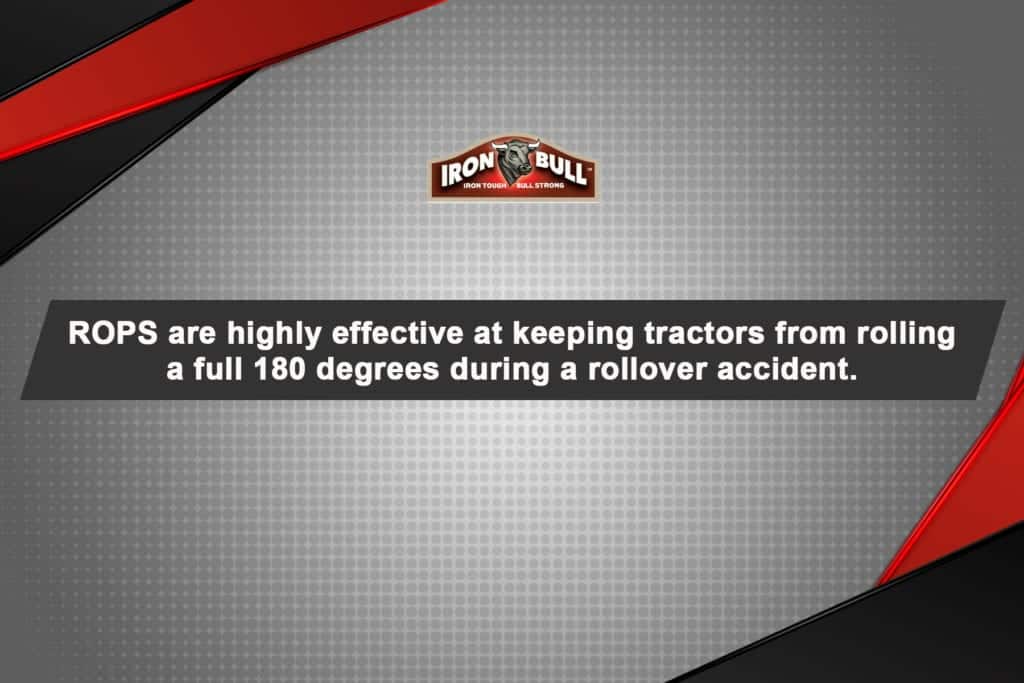
“When we’re doing drainage ditch mowing and field operations, it will keep the tractor from overturning on its back, which would otherwise normally cause the complete crushing of an individual,” he says.
Every human life is valuable, and it's terrible to lose a life unexpectedly and needlessly, especially when a simple certified ROPS installation would have prevented death. And while it's easy to feel like an accident would never happen to you or your loved one, reality is that they do happen. It's never wise to wait till accidents occur to get safety equipment that could have prevented them.
6. What aesthetics should be considered?
When you are purchasing a certified ROPS rollover bar and tractor canopy, it is important to find something matching the aesthetics of your tractor.
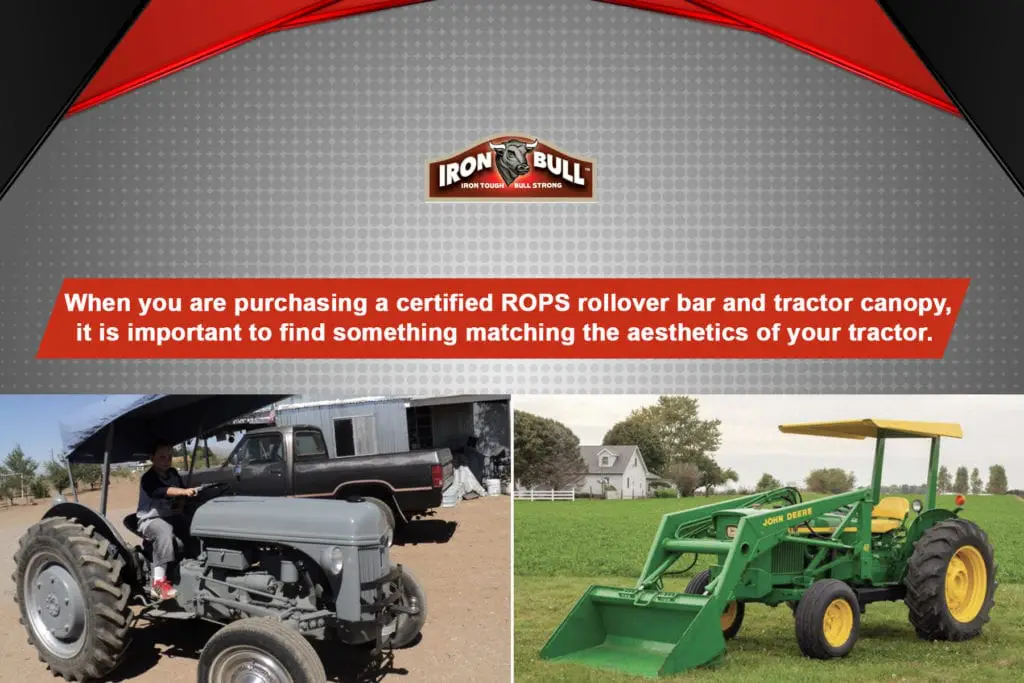
There are many aftermarket products available, but not all of them are designed around a specific tractor model or look. Instead, these generic models are designed to work with multiple tractor styles.
Why is this a problem?
While they may function properly and provide safety, generic ROPS and tractor canopies can look out-of-place on some models, or make a tractor look “pieced together.”
Safety is first, so ultimately you do want the rollover and sun protection. However, while some tractor owners don't mind having a patched-together tractor, many want the added parts to complement their tractor’s aesthetics instead of distracting from it.
That is why our team at Iron Bull Manufacturing has put a lot of time and research into developing certified ROPS and tractor canopies for your tractor.
We know you value safety while taking pride in the way your tractor looks, and we take every measure to have your tractor canopy and ROPs rollover look like the original.
Here is a list of the tractors that we support:
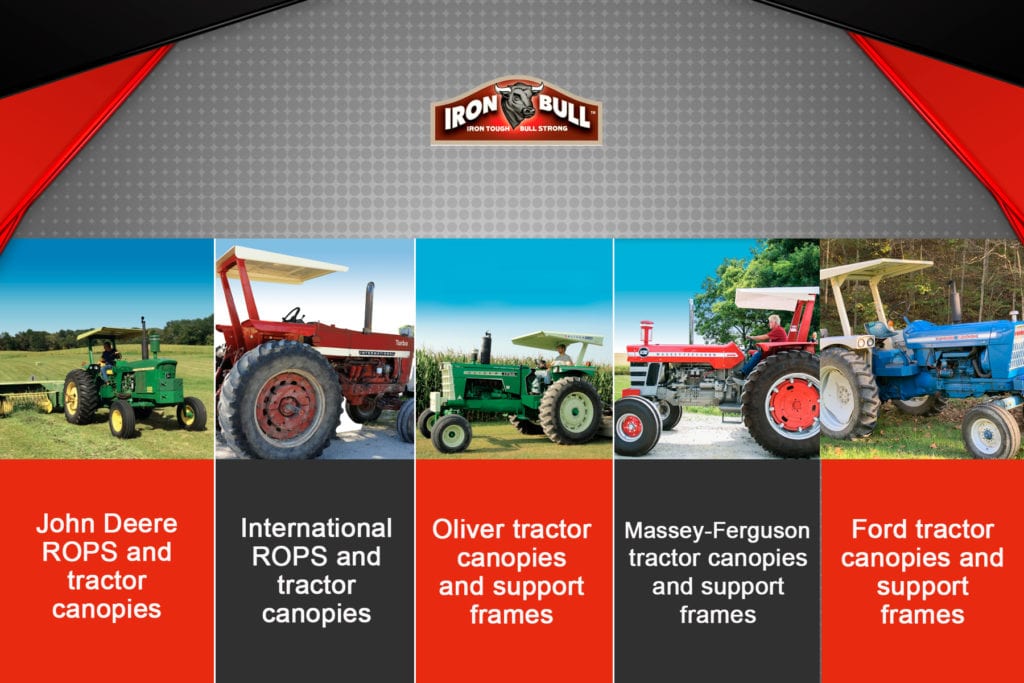
If your tractor does not have a certified ROPS or tractor canopy, then contact us at Iron Bull Manufacturing today to get your quote!
Beyond rollover protection systems, we also offer other products!
- Self-dumping trash hoppers
- Forklift dumpsters
- Specialty hoppers
- Lawnmower canopies and ROPS
- And more products!
Contact us today if you want to increase your tractor safety, comfort, and versatility!
We look forward to hearing from you.

